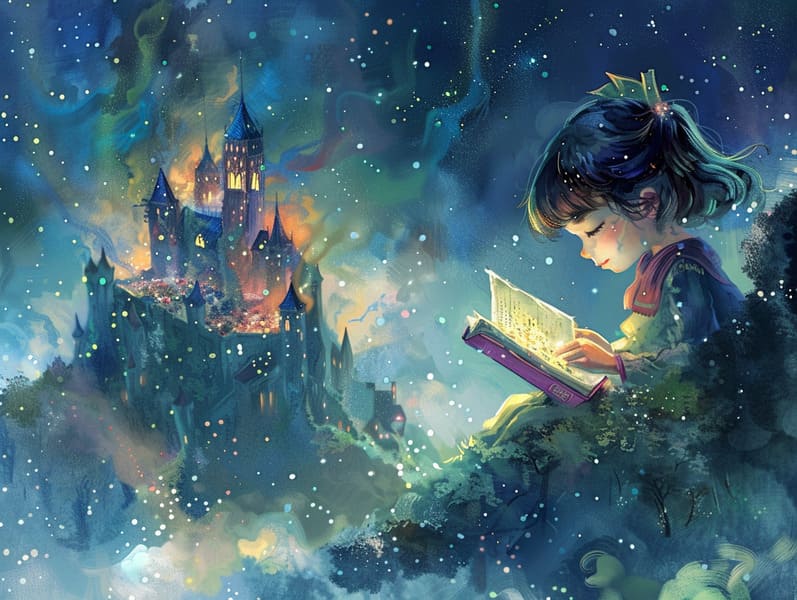The Dawn of Fairy Tales for Kids with Its Unceasing Charm.
The Dawn of Fairy Tales for Kids with Its Unceasing Charm.
Blog Article

Ancient fairy tales have long histories. These narratives have been transmitted from one generation to the next centuries before they were ever inscribed. They developed from a variety of civilizations, including Eastern traditions. They were initially disseminated among older generations, often carrying themes and messages mirroring the societal norms and beliefs of the time.
The Brothers Grimm, Jacob and Wilhelm (the Grimm brothers), were among the first to gather and publish many of these beloved fairy tales. Their collection, "Grimm's Fairy Stories," included narratives like "Cinder Maid," "Hansel and Grethel," and "Little Snow White," which have since become mainstays in the world of classic fairy tales. Similarly, Andersen's fanciful fairy tales, such as "The Little Mermaid," and "The Ugly Duckling," have gained the love worldwide, cementing their place in the pantheon of iconic fairy tales.
Even though they are old, classic fairy tales remain as relevant as ever, especially as children's night stories. These fantastical tales are now available in different formats, including colorful picture books, captivating animations, and web-based fairy tales.
Their enduring popularity can be connected to several enchanting factors:
Life Lessons: Traditional fairy tales often share important moral lessons. Narratives like "The Tale of the Boy Who Cried Wolf" teach the virtue of sincerity, while "The Hare and the Tortoise" illustrate the traits of determination and unassuming nature. These narratives offer the young clear distinctions between right and wrong, molding their moral compass in a mild yet profound way.
Kindness and Comprehension: Timeless fairy tales frequently include protagonists facing difficulties and adversities, provoking young listeners to feel with their struggles and back their triumphs. For instance, "Beauty's Beast" points out the benefit of looking past the exterior to know the true being of a character, nurturing understanding and perception.
Cultural Awareness: Many fairy tales are deeply embedded in the cultural contexts from which they sprang. Discovering these narratives can provide informative snapshots into different backgrounds, promoting a sense of global insight and knowledge.
Fantasy and Imagination: The mythical elements in old fairy tales—talking beasts—boost children’s dreaming abilities. These stories take readers to fantastical realms, kindling imaginative dreams and a sense of enchantment that persists a lifetime.
Old fairy tales are not only mesmerizing but also instructive. They work as charming tools in advancing various cognitive and affective skills in children. When fairy tales are spoken, they promote communication skills by offering new phrases and elaborate sentence structures. This practice also enhances hearing abilities and focus, as the young keep up with the story, keen to see what happens next.
Furthermore, debating the themes and characters of timeless fairy tales can improve evaluative skills and reasoning skills. Young readers are led to detect patterns, forecast, and figure out cause and effect. These deliberations also support kids utter their thoughts and feelings, enhancing their emotional intelligence.
In today’s modern era, the existence of digital storybooks has made these stories more attainable than ever. Internet sites and apps share wide arrays of famous fairy tales that can be explored or heard anytime, anywhere. Fairy tales read aloud are particularly liked, sharing an fun way famous fairy tales for children for little ones to relish these charming stories. Narrated books and narrated videos lead characters and settings to life, often enhanced by fantastical melodies and background music that augment the narrative experience.
The persistent attraction of traditional fairy tales lies in their ability to alter to current times while keeping hold of their key morals. Contemporary adaptations of these narratives often present more multicultural figures and modern settings, making them relatable to today’s audience. However, the core values of gallantry, kindheartedness, and rightness remain unchanged, continuing to touch kids of all ages.
Ancient fairy tales also offer a sense of coziness and closeness. They extend a organized narrative with a apparent beginning, middle, and end, often coming to a close with the wrap-up of conflicts and the triumph of righteousness over wickedness. This regularity can be consoling for little ones, introducing a sense of constancy in an always shifting world.
Classic fairy tales continue to enthrall and enlighten new generations, maintaining their captivation and pertinence in modern society. As children's bedtime stories, they render a perfect blend of captivation and insight, sustaining moral values, empathy, and creativity. The prevalence of digital fairy tales and the widespread nature of fairy tales read out loud secure that these traditional narratives remain reachable to new generations.
By defending and releasing these stories, we continue to extol the rich tapestry of cultural heritage and cultural heritage. Whether you are viewing a colorful picture book, seeing a digital collection, or listening via an narrated book, the magic of ancient fairy tales is always within reach. These fairy tales illustrate of the unceasing spell of tales and its ability to join us across time and space.
Whether you are seeing a beautifully illustrated book, exploring a online collection, or listening to an audio story, the allure of ancient fairy tales is always within reach.
These narratives convey of the perpetual magic of stories and its ability to unify us across time and space, forging a link that fascinates and enlightens alike.